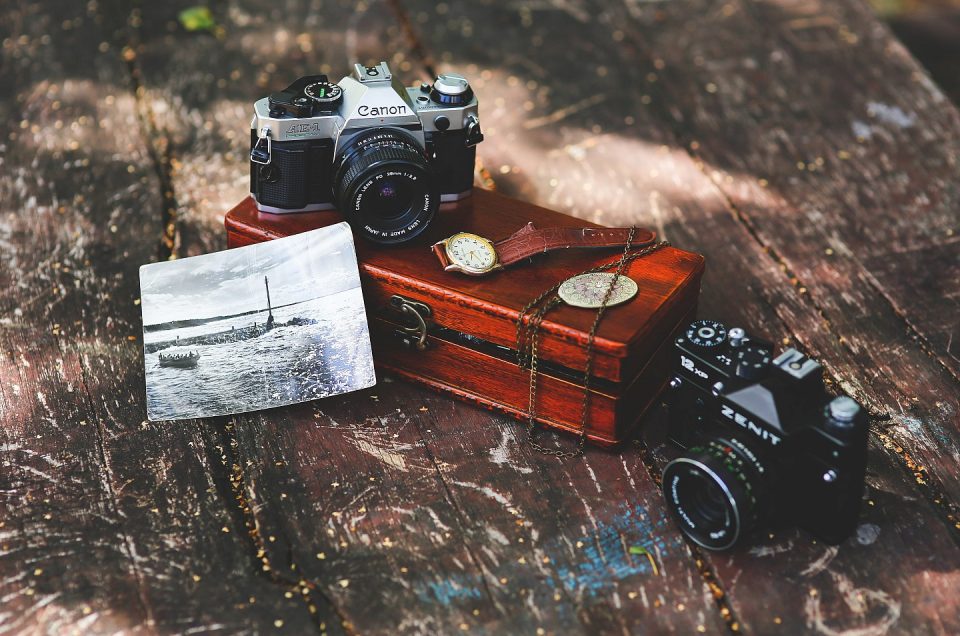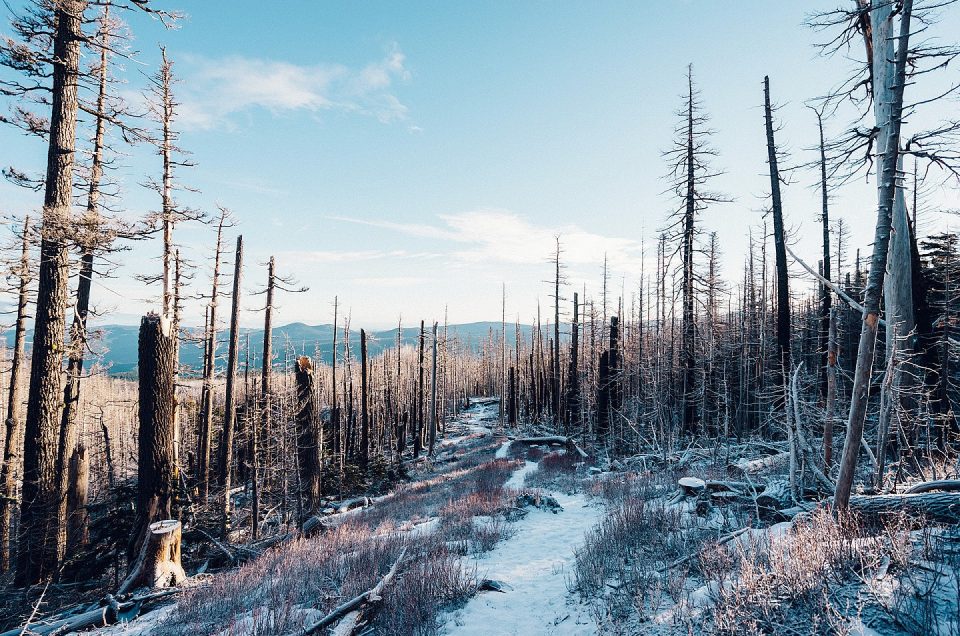Five Essential Photography Tips for Autumn Color
Autumn color season is one of the most eagerly anticipated times of the year for restless nature photographers. The brilliant red, orange, and yellow foliage is like a jarring wake up call for all the creative energy atrophied by the listless and drab dog days of late summer (August through mid- September has always been my least favorite time of year). And since these photos aren’t going to just take themselves, here are 5 essential tips to help you make the most of the autumn color season.
Polarize
A polarizing filter removes glare from almost any non-metallic surface, which includes autumn leaves. Leaves have a waxy coating and they produce glare when viewed from certain angles. A polarizing filter makes fall color look more colorful and saturated but in reality, it’s only allowing you to see the color that’s already there. Wet leaves create even more glare so during rainy conditions, a polarizing filter is nearly essential.
When working near water, a polarizing filter will also remove glare and refections from the water’s surface and surounding west rocks. It will cut glare from water vapor and particulates in the air as well, making blue skies darker and richer in color. The direction of maximum polarization occurs at 90-degree angles from the sun, while no polarization occurs when shooting directly at or away from the sun. Therefore, no polarizer is necessary when photographing sunrises or sunsets.
Get a screw-in polarizing filter for your lens with the largest front element size, then step-up rings for those smaller lenses. Step-up rings are much more cost effective than a polarizer for each lens. Some recommended polarizing filters (links to Amazon).
B+W 77mm XS-Pro HTC Kaesemann Circular Polarizer with Multi-Resistant Nano Coating ($$$)
Hoya 77mm HRT Circular PL Polarizer UV Multi-Coated Glass Filter ($$)
Lee Filters Circular Polarizer – Glass 100x100mm For Lee filter holder system.

Use Backlight
The leaves of autumn foliage are translucent, which means sunlight is allowed to partially pass through them when viewed or photographed from the opposite side. The foliage seems to glow and radiate the boldest colors when this happens. Seek out as many of these lighting opportunities as possible for stunning, luminous color.
This will work anytime there is direct sunlight. Even when most photographers retire during the “idle light” of midday, you can always aim the lens skyward as the canopy of yellows and reds glow against the complementary crisp blue sky. Stop the lens down to f/22 for a sun star to add additional interest.
Keys to Using Backlighting
- Aim the camera toward the sun (duh!)
- Be aware of ghosting or flare when shooting into the sun. Your lens hood might help, although probably not if shooting directly into the sun, so consider using your hand, a hat, a book, anything that can block the sun’s rays from striking the front element of the lens.
- Avoid underexposure. Your camera’s meter will probably want to underexpose the scene under most backlighting conditions. Consider adding a stop or two of exposure to keep the image from being too dark. Better yet, consult the histogram and “exposure to the right.”
- Look to add a sunstar for additional interest and a strong focal point of the image – if it needs one. A sunstar is created by using lens diffraction when a small aperture is used. A small aperture is associated with large f-stop numbers so a setting of f/22 usually does the trick. Best results are when you partially obscure the sun behind a tree branch or mountain, leaving only some of the sun’s rays peeking through. Let diffraction do the rest.
- Try to employ complementary colors by shooting skyward on a sunny, blue-sky day. The warm tones in the backlit foliage fully complement the blues in the sky.

Use Telephoto Lenses to Isolate
You should look to use a short telephoto lens (70-200mm or even 100-400mm) to isolate patterns of autumn color, interconnected shapes, and textures within the larger landscape. A forest of trees, colorful or not, can be a confusing maze of visual chaos. But by isolating smaller vignettes with a telephoto lens, you can help bring some order to that chaos.
Telephoto isolation in landscape photography is the fine art of exclusion, stripping away any extraneous visual elements to reveal only the most essential and important parts of the scene. This is particularly true when shooting autumn color.
In the example above with a focal length of 85mm, I reveal to the viewer only a small section of a larger waterfall and scene, splitting the image into three equal sections: the autumn color, the falling water, and the distinctive glacial blue of the river.
Some short telephoto lenses to consider (links to Amazon):
Canon EF 70-200mm f/2.8L IS II USM Telephoto Zoom Lens
Canon EF 70-200mm f/4 L IS USM Lens
Canon EF 100-400mm f/4.5-5.6L IS II USM Lens
Nikon AF-S NIKKOR 70-200mm f/2.8E FL ED VR
Sony FE 70-200mm f/2.8 GM OSS Lens

Look Down
When exploring autumn color scenes in the trees and hillsides, don’t forget to look down at the ground at the “leaf litter” scattered along the forest floor, river rocks, trails, etc. This is particularly true in late autumn, my favorite part of the season when a lot of the leaves have already fallen, some of the trees are completely bare or still holding on to a few leaves, and there no longer is any green hanging around.
There are often many tiny scenes within the autumn leaves themselves found in the patterns of veins and variations in color found in a single fallen autumn leaf. A versatile macro lens of about 100mm is a useful tool for these types of images, like this image shown above. Links below to Amazon.
Canon EF 100mm f/2.8L IS USM Macro Lens
Nikon AF-S VR Micro-NIKKOR 105mm f/2.8G IF-ED Vibration Reduction Fixed Lens
Sony SEL90M28G FE 90mm f/2.8-22 Macro G OSS Standard-Prime Lens

Look For Reflections
On any sunny autumn day, find a body of water that is in the shade but also near some brightly illuminated autumn color, such as a grove of colorful trees or hillside. Here is where you will find a great opportunity to photograph fall reflections. If the water is still enough, you can capture some literal refections that create a mirror image of the primary subject. If the water is choppy from the wind or is moving, like you would find in a river or stream, you can make abstract reflections or colored water with longer exposures. The above image is an example of the latter, with a 10-second exposure being used to smooth out the water’s surface.
These type of refection images almost always need some help in the form of one or more visual anchors in addition to reflection. A rock or rocks, a log, or a duck are just some examples to look for when making autumn color photos of reflections. In order to get exposures of 10 seconds of longer during the middle of the day, you will need a strong neutral density filter of 6 to 10 stops in filter strength. I use the Lee Big Stopper (10 stops) and Little Stopper (6 stops) for these situations. Links to these and some other options below on Amazon.
Lee Filters 100 x 100mm Big Stopper 3.0 Neutral Density Filter, 10-Stop
Lee Filters 77mm Big Stopper Kit – Lee Filters 4×4 Big Stopper (10-stop ND Filter), Lee Filters Foundation Kit and 77mm Wide Angle Ring with 2filter cleaning kit
Lee Filters 100 x 100mm Little Stopper 1.8 Neutral Density Filter, 6-Stop
Tiffen 77mm Variable Neutral Density Filter




Leave a reply